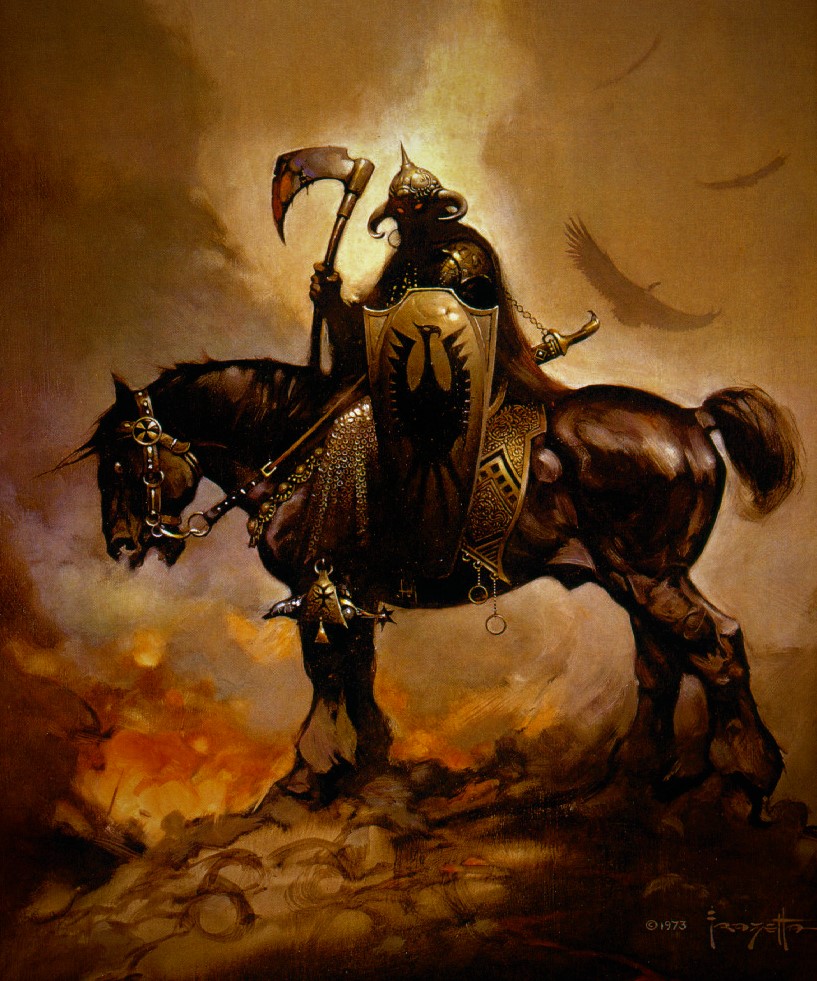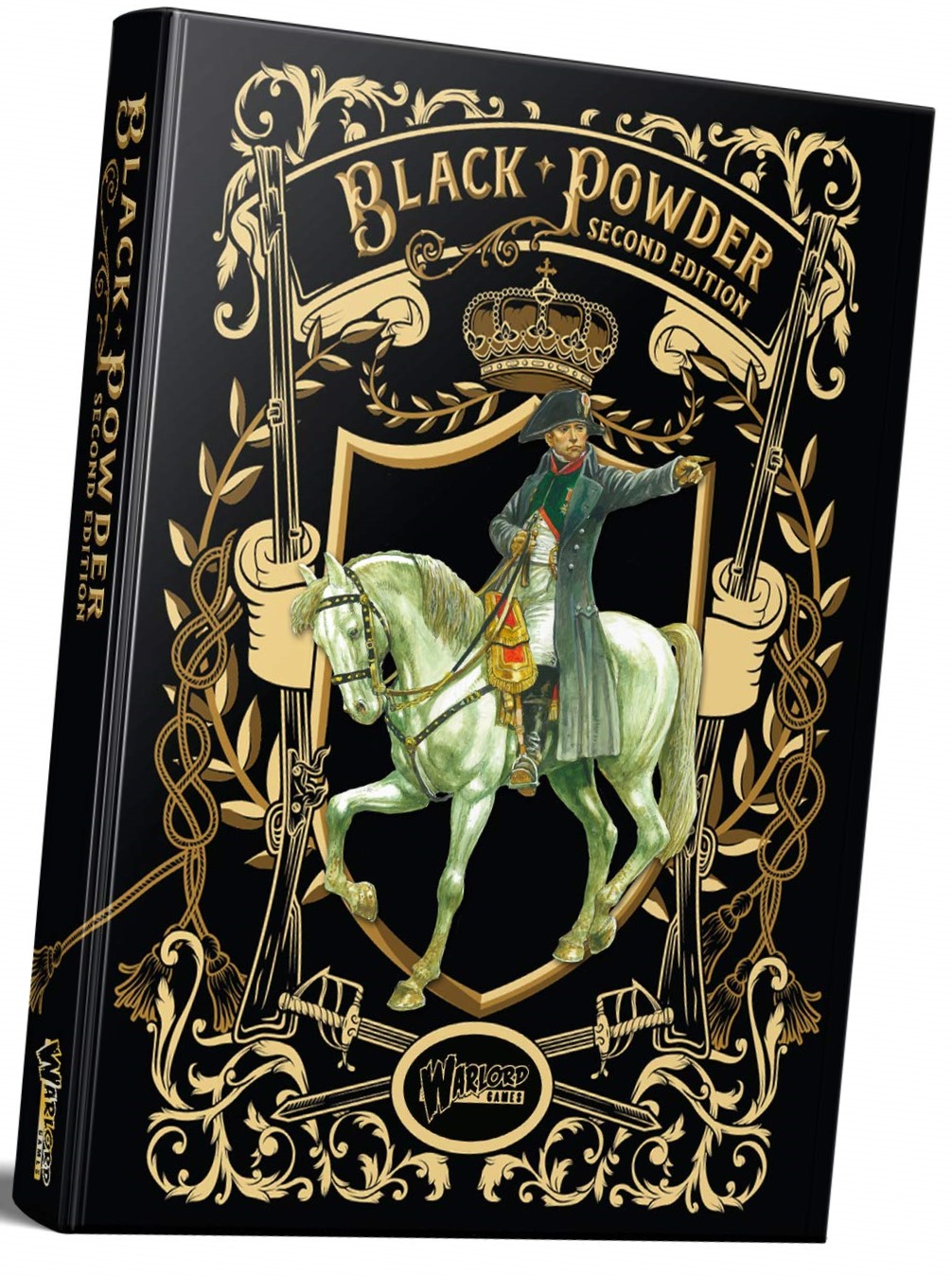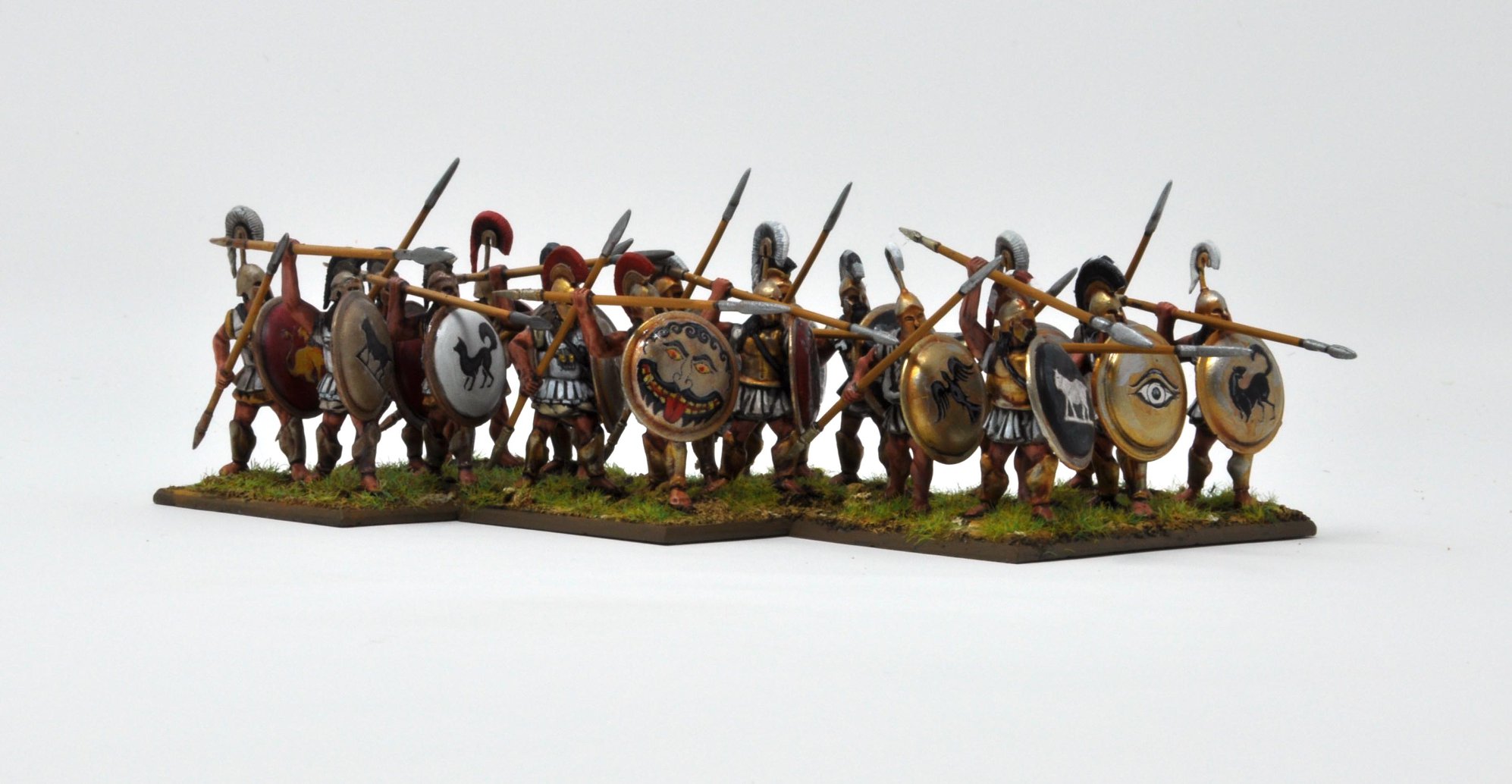If anyone deserves the title of Legend when it comes to wargame design and development then it has to be Rick Priestley. His highly impressive and extensive CV dates back to the late 1970’s and pre-Warhammer Fantasy Battles days with his rules for Reaper, a game written with Richard Halliwell (first published by the Nottingham Toy Soldier Shop in 1978). During a three decade career with Games Workshop, in addition to Warhammer, Rick also worked on Warhammer 40,000, Necromunda, The Lord Of The Rings Strategy Battle Game, Warmaster, Warhammer Ancient Battles and Warmaster Ancients, among other game systems and publications. Since moving on from Games Workshop in the late 2000’s, Rick has worked on a slew of other games, including Black Powder, Hail Caesar, Bolt Action, Beyond the Gates of Antares and Warlords of Erehwon, all for Warlord Games. In addition, he also wrote the rules for Lucid Eye Publication’s The Red Book Of The Elf King…
- My journey began… Having fought my way through the dense and dark Great Forest, the spores of madcap mushrooms mingling with the dying embers of camp-fires to give the air a sweetly acrid aroma, I was acutely aware of the glinting beady red eyes of Forest Goblins following my every step. Hanging round my neck, I wore a magical amulet which I had acquired some time previously from a thief-come-traveller in a tavern in Reikland. This small, ornately decorated charm emitted a threatening ethereal voice heard only by Goblins, resulting in the diminutive green skins, highly superstitious creatures, feeling an unsettled sense of fear and a reluctance to approach me. Whilst this prevented an outright attack from the vicious forest dwellers, I knew that they were eagerly waiting for me to fall prey to one of their many carefully constructed spider venom pits. I also knew that eventually the Goblins’ hesitance to strike would fade, and if I was not clear of the forest at this time, then I would undoubtedly by overcome by sheer numbers. Breathing a sigh of relief, finally I came upon a clearing in the trees which led to a rugged mountain path.
- Littered with the bones of unfortunate victims of Hill Trolls and Ogres, broken and stripped of flesh, numerous carcasses of man, elf and halfling alike lay casually disregarded along the trail. I groped for my dagger, anxious of being set upon. After what felt like an age of traversing this path, with sun setting, at last I came to a small but well-constructed shepherd’s cottage. Lifting the heavy brass door knocker I made my arrival known. Wizard Priestley answered the door, he’d been expecting me…
The Wargaming Wizard! A Talk With Rick Priestley… Part 1.
From Warhammer Fantasy Battles to Warmaster, Warhammer 40,000 to Gates of Antares, over an illustrious career that goes back to the early-1980’s, Rick has worked on many wargames and rulebooks and has added much colour to various fantastical and futuristic worlds. Keen to find out what set him on his path, one of my first questions for Rick was around his early fantasy and science fiction influences.

Rick Priestley: I was born and grew up in Lincoln. I don’t know if there ever was a point at which fantasy or science-fiction entered my life as such. Growing up as a kid in the 1960’s there were things like Dr Who on the telly, Stingray and Fireball XL5, Lost in Space, Batman, The Avengers, and more besides I’m sure. There was the TV21 comic too – fantastic artwork in that – and Dan Dare in the Eagle and the Trigon Empire in Look and Learn. The Americans and Russians were at it in real space too – what was science-fiction one year turned into science-fact the next. ‘Adrift in the Stratosphere’ by Professor A. M. Low was probably the first SF book I read. My primary school had a copy. It must have made an impression because I remember it more than fifty years on. Later as a teenager I read a lot of classic SF as well as fantasy – but those were popular genres at the time.
I’m sure TV was by far the main influence and inspiration for the visual side of things rather than films: Star Trek rather than Forbidden Planet, Space 1999 rather than 2001 A Space Odyssey. (Inspiring) illustrators? Not on any conscious level. The imagery of the Gerry Anderson 21st Century must have inspired some sort of aesthetic I suppose, but I couldn’t name the individuals concerned aside from the man himself. Well, I could tell you the Captain Scarlet intro scenes were drawn by Ron Embleton, who also drew for contemporary comics such as TV21… but that’s about it. Rodney Matthews drew some of the most memorable book and album covers of the 1970’s. ‘Big O Posters’ produced many of these as the sort of posters we all had on our bedroom walls: beautiful whimsy. The Conan books carried covers by Frank Frazetta: fantastic artist whose portrayals of raw power convey such menace.

It would be books that mostly influenced – or inspired – what I would later go on to do in the world of wargames. And I read a lot as a teenager, often swapping books amongst my friends, lots of SF and fantasy from Asimov to Zelany. Zelany contributed to Lin Carter’s ‘Flashing Swords’ series of short stories. Along the way you pick up the classics: Robert E Howard, H P Lovecraft, E E Doc Smith and Edgar Rice-Burroughs amongst them. Probably the most influential book I ever read was The Lord of The Rings. I suspect I am not alone in that! LOTR was a touchstone for the counter-culture. After that I’d cite Dune by Frank Herbert. At the time I recall that it was almost as influential as LOTR. I sense Dune has fallen away in terms of a modern readership; perhaps supplanted by film and TV versions in a way that hasn’t happened with LOTR. Michael Moorcock wrote copiously and was at the forefront of the alternative cultural world of the 1970’s; the Ladbrooke Grove scene and all that. He even appeared with Hawkwind at one point; An Alien Heat has a dedication to the band members of that time. I mention Moorcock because he is so closely associated with the ‘Chaos’ concept that we would pick up on as a theme at Games Workshop. That was something Bryan Ansell brought to the mix rather than me, but I would say Moorcock’s influence was in fact broader and more by way of inspiration than that simple correlation implies. A lot of the anachronistic elements that morphed Warhammer (fantasy) into Warhammer 40,000 (SF) pop up in Moorcock’s work too.
Whilst always an enthusiastic reader, I wouldn’t say art or literature featured much in my day-to-day life as a youngster. Ours was an ordinary working class family in most respects. Art and literature all happened on BBC 2 and as such remained a mystery. I don’t honestly think my reading habits were any different from my peers. SF and fantasy certainly didn’t count as ‘literature’ as far as our teachers were concerned!
I was a bit of an all-rounder at school and wouldn’t say I excelled at anything especially. I usually finished pretty near top of the year when it came to the English exams. On the other hand I usually finished pretty near the bottom when it came to French, so make of that what you will. I went to the local Grammar. O levels then A levels. Standard sort of thing. In retrospect, I think our teachers were very good. Even the French teachers. I can’t blame them for my shortcomings I’m afraid.

Looking to find out what first drew Rick to the world of wargaming, Rick delved back into his childhood memories of Airfix models and toy soldiers. He then detailed the fortuitous purchase of Charles Grant’s ‘Battle! Practical Wargaming’ and it’s resulting impact, in addition to tipping his hat to Donald Featherstone and Military Modelling magazine.
Rick Priestley: All my wargaming contemporaries will tell you the same story: it all began with Airfix models and Britain’s toy soldiers as mere infants. Well, yes. We all had those toys. We all built plastic model kits. We all played with soldiers and made up games of war on the bedroom carpet. Was that wargaming? Not really. Was it the seedbed that nurtured many a wargamer to be? Yes, certainly.

I first encountered proper grown-up wargaming with formal rules and dice in the form of Charles Grant’s ‘Battle! Practical Wargaming’ (MAP 1970). I was looking to spend a book token I had won as a school prize. Most likely this was for English, so you can hold the education authority responsible for everything that followed! So there I was in Ruddocks in Lincoln, browsing the usual selection of books, and I came across this one. It looked interesting. I recognised some of the black and white photographs of Airfix models with which I was familiar. I bought it. I wasn’t to know at the time, but the book was actually a compilation of articles written for Meccano Magazine. That’s why the rules are approached as a series of articles, each explaining the aim of that section, discussing the reasoning behind the rules, and finally summarising how the rule would work. It was that approach that inspired me as much as anything. It felt like a key to unlocking something bigger. My path soon crossed with those of school-mates who had discovered wargaming for themselves, often via the books of Donald Featherstone. Featherstone’s wargaming books were carried by libraries, which was one reason they were so popular, and covered a wide variety of subjects including fighting battles at sea and in the air, campaigns and so on. Military Modelling magazine started publishing at the same time and soon became the ‘go to’ source for information about wargames figures and rules. I must have subscribed pretty early and have my collection still. Somewhat dog-eared.
To those outside of the modelling and wargaming hobby it can be difficult to comprehend, however those of us with taste (!) know that fielding an army of full of painted miniatures atop a well decorated tabletop brings a joy like no other. Rick described the development of his model collection.
Rick Priestley: The first Airfix figures I remember buying for myself were the US Cavalry set, two shillings from Woolworths sounds about right. I collected the Britains Swoppets Knights and Cowboys in so far as I could afford them, but they were relatively expensive. I would study the Britains catalogue for hours, fantasizing what to buy if I had the means. The Greeks and Trojans always eluded me. My first Airfix kit might have been the Spitfire but I don’t really recall. I must have been born with the scent of polystyrene cement in my nostrils. As were we all.

The first metal model figures I bought were Les Higgins miniatures, which I acquired during a family holiday to London, I guess about 1970. These would be a mix of English Civil War and War of the Spanish Succession, but really just odds and ends that I liked the look of. I don’t think much wargaming took place with those, but I painted them and still have them somewhere. When I started wargaming with ‘Battle! Practical Wargaming’, I set out to mimic the forces from that book, using Airfix Russian infantry and Roco Minitanks vehicles including trucks and tanks. Minitanks were made in Austria and came ready assembled. They were slightly smaller than Airfix model kits at 1/87th. They were also fairly hard to get hold of, so you tended to buy whatever the stockist had even if it wasn’t quite what you wanted. As a result my Russians were obliged to use somewhat anachronous Unimog trucks for daily transport and were supported by a Panzer IV with short 75mm gun.
Ancient and medieval wargaming caught my imagination early on. Aside from the Airfix Romans and Britons there was the Robin Hood set, which provided plenty of models that could be ‘converted’ into a variety of things with the addition of drawing pin shields and spears or swords made from wire. I remember sending off for metal Romans and Gauls to accompany my Airfix figures. These were Garrison Miniatures ’20mm’ figures, but which were in fact intended to match Airfix HO/OO models and closer to 23-24mm in size. Ancients, and Romans in particular, have always been my ‘go to’ subjects for wargames and I have a great many in a variety of sizes, old and new, some of which I even made myself back in the days when I could still knock out the odd model and consider it not too shoddy.

To be continued… Part 2 HERE.
Follow Rick Priestley on Facebook HERE.
This Gaming Life: A resource for the Warlords of Erehwon fantasy wargame by Rick Priestley HERE.
Elsewhere… Bastard, The Damned, The Lords of the New Church & More: The Authorised Biography of Brian James…
The New York Dolls, The Heartbreakers, Johnny Thunders & More: A Book About Johnny Thunders…
Ron Asheton: The Stooges, Destroy All Monsters & Beyond ...
The Cramps, Beast & Beyond: A Book About Bryan Gregory…
Copyright © 2020 John Wombat & Ruth Moreira









25 thoughts on “The Wargaming Wizard! A Talk With Rick Priestley… Part 1.”
Comments are closed.